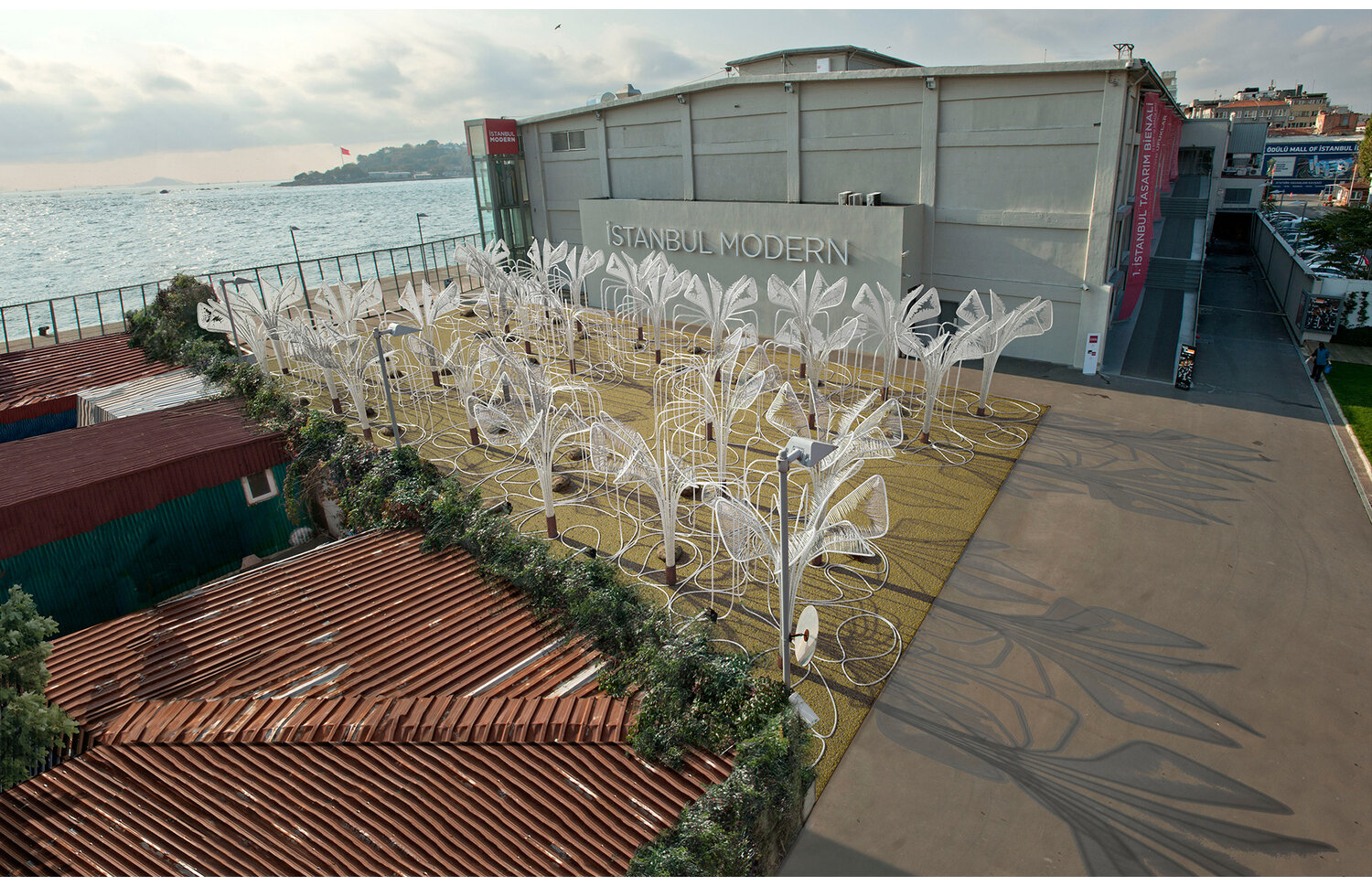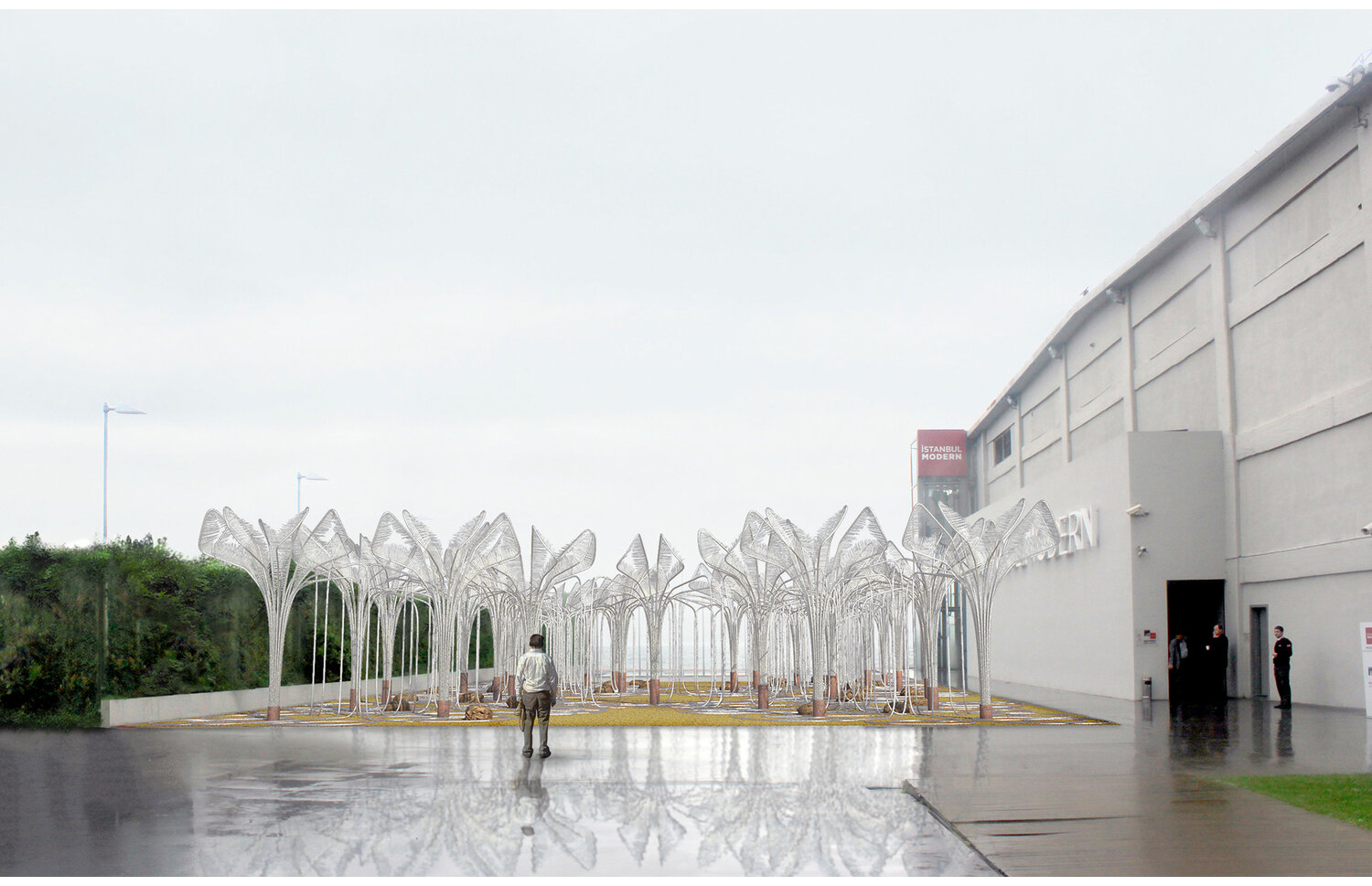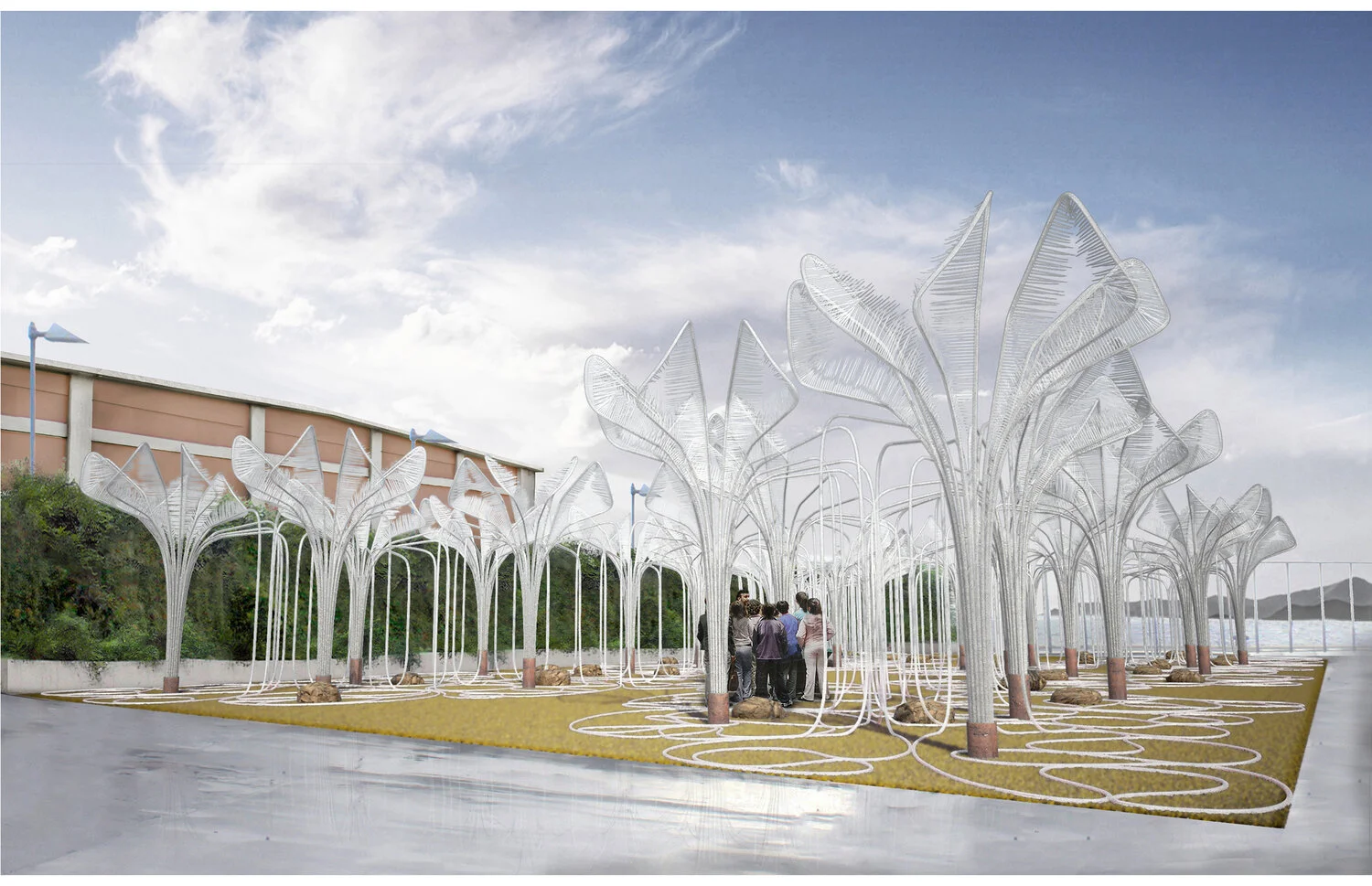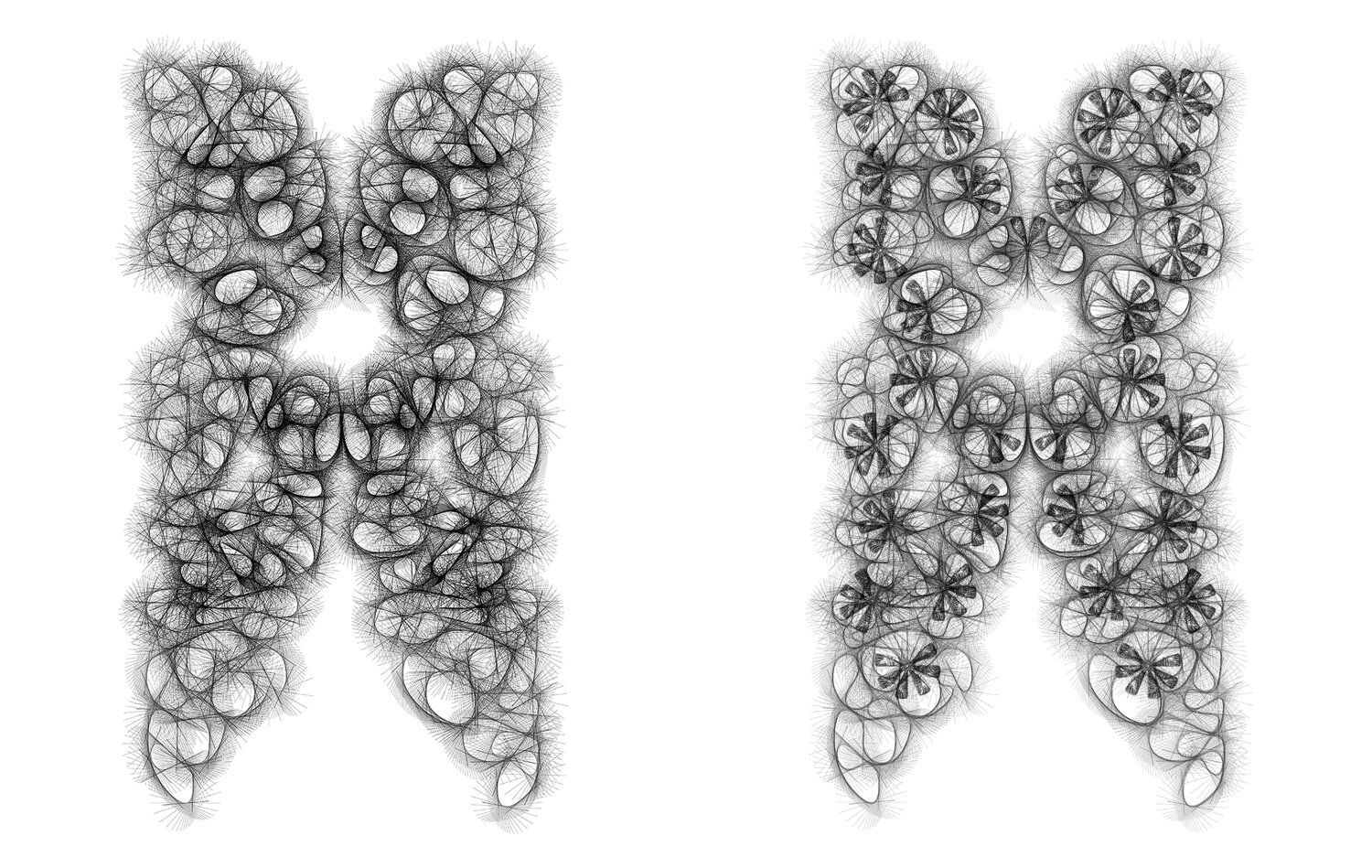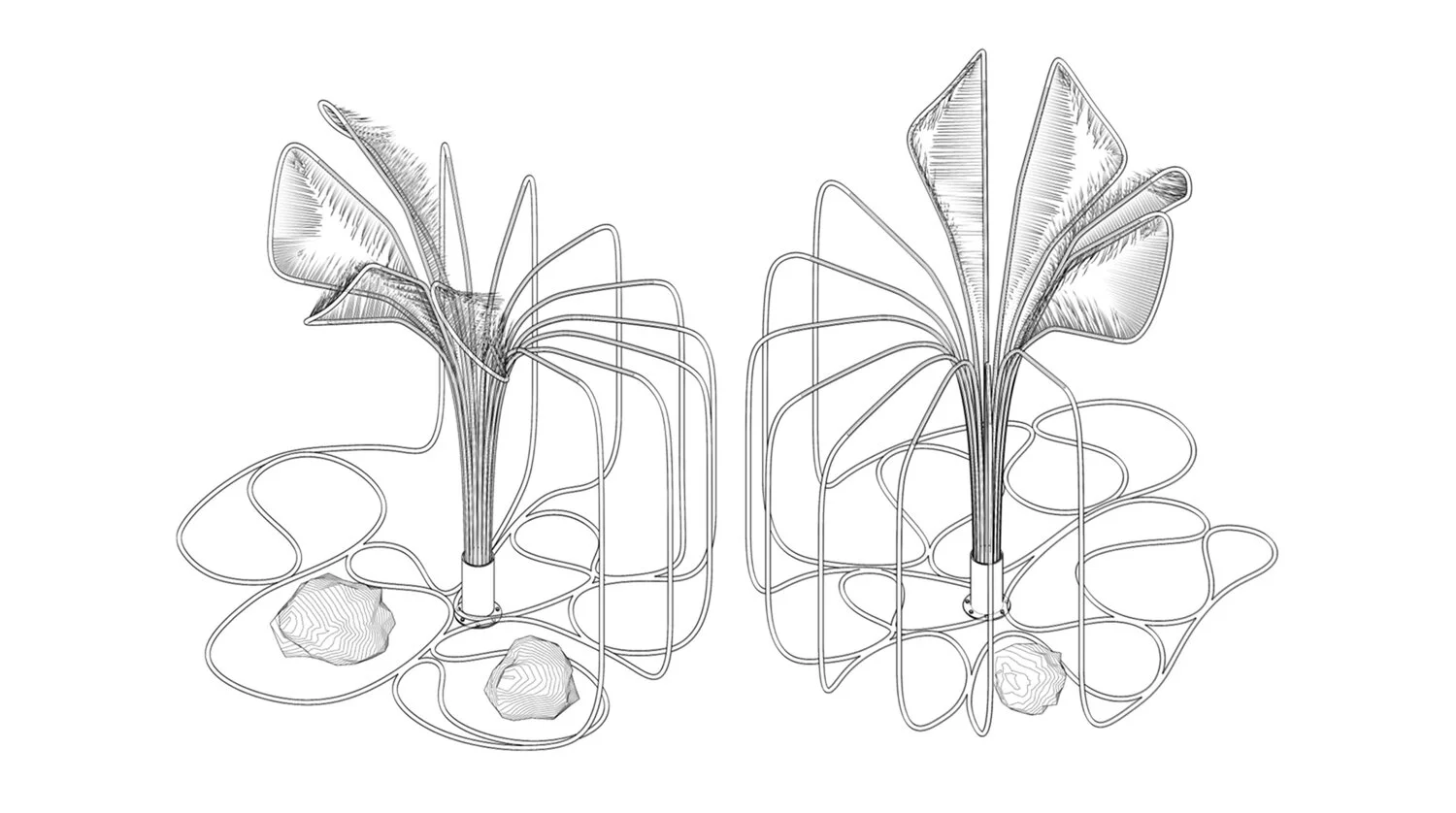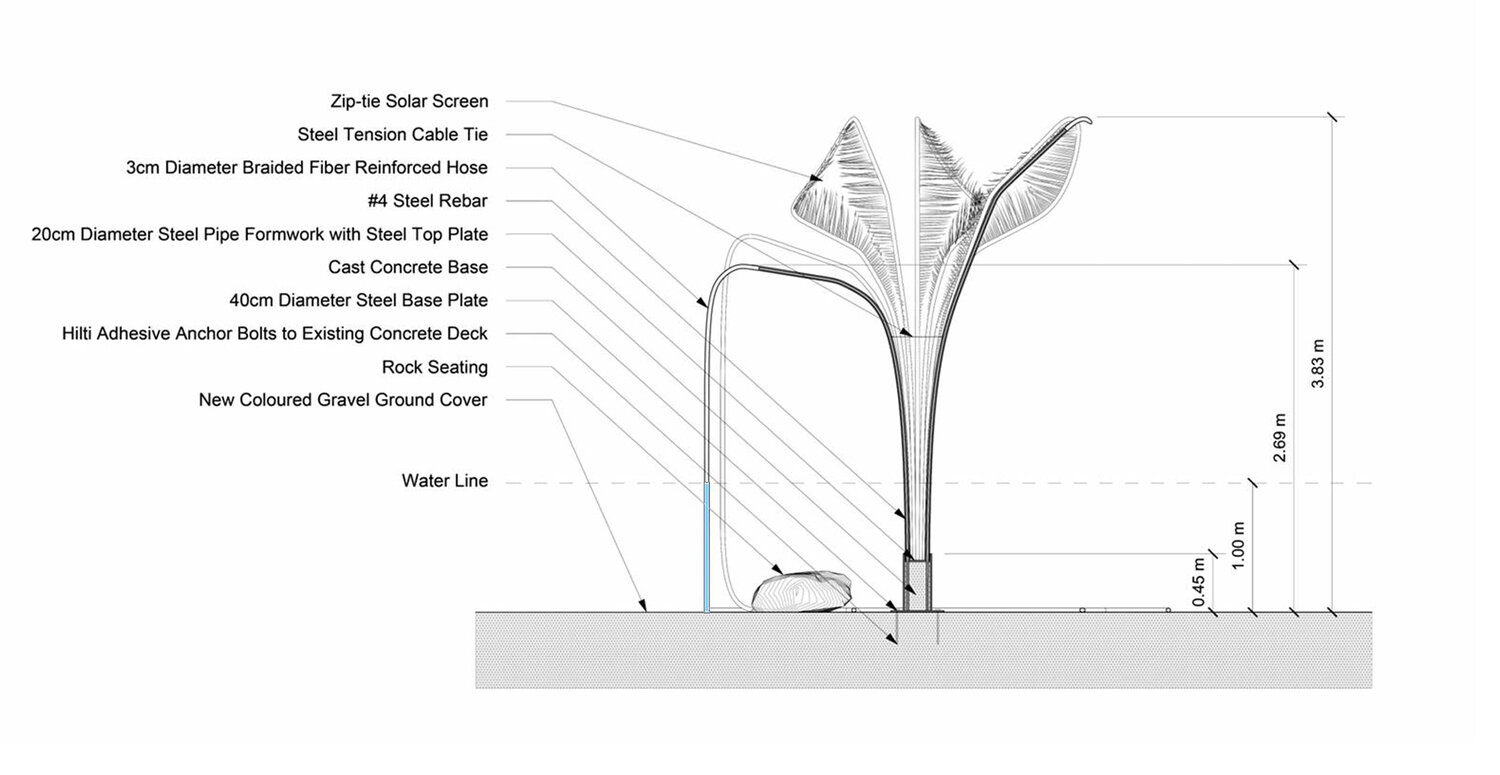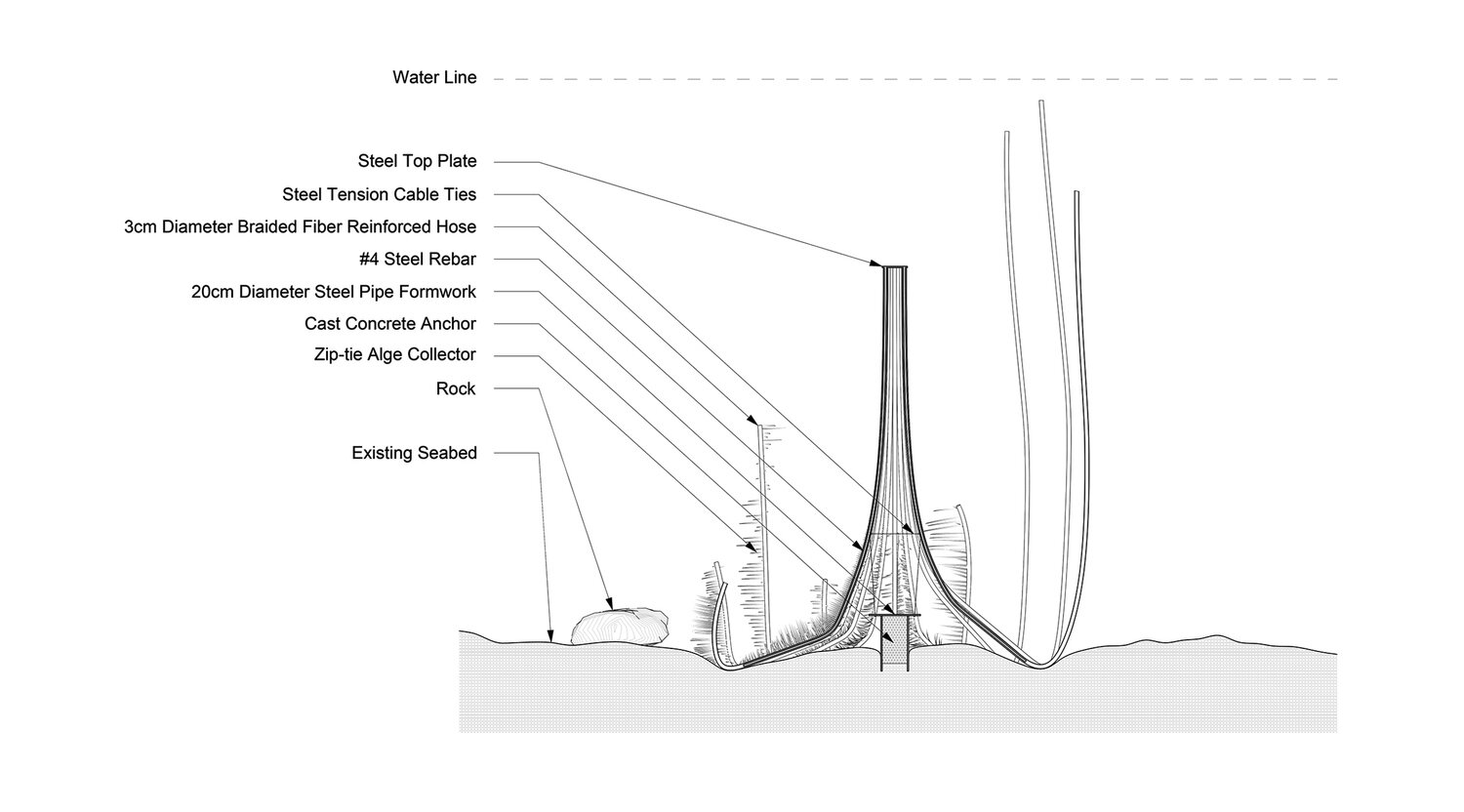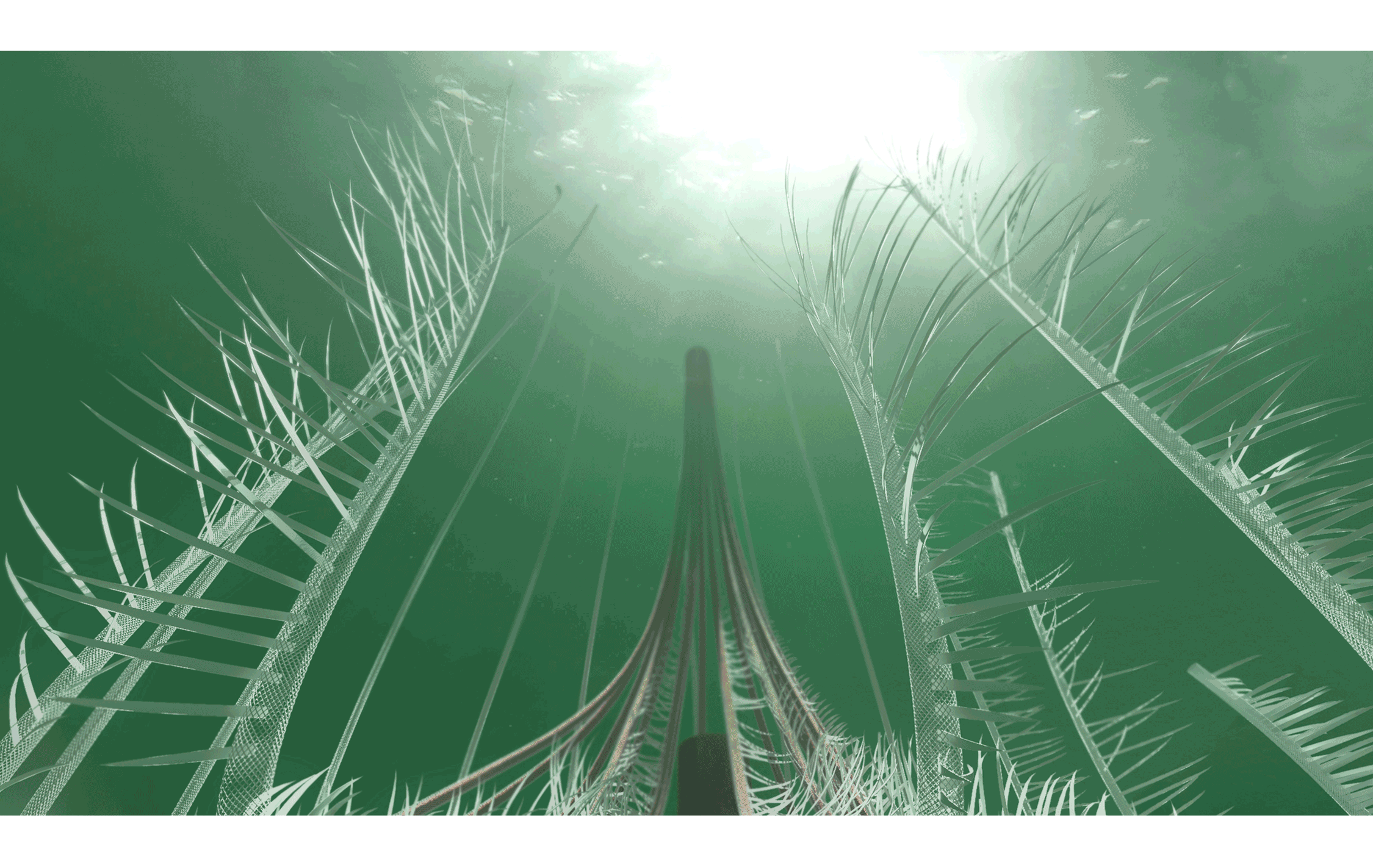THE BOSPHORUS GROVE
Location: Istanbul, Turkey
Type: YAP Pavilion, Invited Competition
Structure: Hoses, Zipties, Rebar
Year: 2015
Team: Sina Özbudun, Isidoro Michan, Alastair Stokes, Julia Fleckenstein, Bob Simon
Natural is Not in It
The Bosphorus Grove was designed for the 2015 MoMA Young Architects Program at the Istanbul Modern Museum. At first glance the arrangement of clusters of branching columns with petal like elements is reminiscent of a natural tree grove, but the elements are clearly not nature. This grove is somewhere between the mechanical and the biological as the tubes allude to cultural situations as diverse as auto machinery shops and medical treatment facilities. These elements are symmetrical in plan, but where the traditional tree grove is ordered on the planted ground with the tree canopy taking on natural asymmetries above, The Bosphorus Grove is symmetrical above and informally asymmetrical on the ground. The ground organization created through an ever-changing all-over meandering movement of garden hoses across the site.
The construction is made from common industrial building materials; concrete cast in steel pipe, steel rebar structure, fiber braided hose, and zip-tie attachments. But when assembled these materials create a completely different aesthetic than their typical pragmatic associations. The drooping field of hoses combined with the sheen and flicker of light off their transparent woven surfaces produces an atmospheric effect of mist and other airborne aqueous qualities. The hoses also literally hold water up to a certain level as ballast anchoring the grove to the ground and stabilizes the petal canopy’s physical desire to flutter in the air.
Sustainability is in many ways a speculation on the future of the materials and assemblies of our environment. Most buildings are torn apart, broken down, and buried as waste in landfills. The Bosphorus Grove pavilion is reused in its entirety. The trees are cut from their concrete bases and flipped over to be placed in a new arrangement as a fish habitat. The concrete bases now serve as anchors for the underwater structures. The surfaces of the hoses no longer scatter light reflections but now become attractors for algae and the encrustation of water life that flows through the Bosphorus. As marine life accretes over time, the hoses become closer to geological/biological material, artificial underwater rocks.
© All content © Young & Ayata

